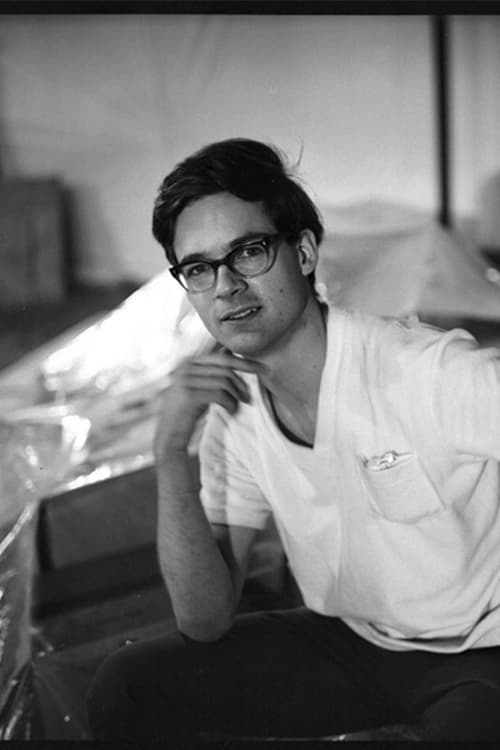
Self (voice)
Experience the iconic rock band's legacy in the first major documentary to tell their story. Directed with the era’s avant-garde spirit by Todd Haynes, this kaleidoscopic oral history combines exclusive interviews with dazzling archival footage.

Himself (archive footage)
In his essay film, Jerry Tartaglia, longtime archivist and restorer of the film estate of queer New York underground, experimental film, and performance legend Jack Smith, deals less with Smith’s life than with his work, analyzing Smith’s aesthetic idiosyncrasies in 21 thematic chapters. It's a film essay about the artist’s work, rather than a documentary about his life. An unmediated vision of Jack Smith, an invitation to join him in his lost paradise.

Himself
Feature documentary on the pioneering life and work of iconoclastic filmmaker/musician/composer/artist Tony Conrad.

Thanks
Based on the ideas of Russian philosopher, Nikolai Fedorov, Anton Vidokle’s film was shot in Siberia, Crimea, and Kazakhstan. Fedorov, like others, believed that death was a mistake, “because the energy of cosmos is indestructible, because true religion is a cult of ancestors, because true social equality is immortality for all.” Fedorov was one of the Cosmo-Immortalists, a surge of thinkers that emerged in Russia in the late 19th and early 20th centuries. They linked Western Enlightenment with Russian Orthodoxy and Eastern philosophical traditions, as well as Marxism, to create an idiosyncratically concrete metaphysics. For the Russian cosmists, cosmos did not mean outer space: rather, they wanted to create “cosmos” on earth. “To construct a new reality, free of hunger, disease, violence, death, need, inequality – like communism.”

An intimate, affecting portrait of the life and work of ground-breaking performance artist and music pioneer Genesis Breyer P-Orridge (Throbbing Gristle, Psychic TV) and his wife and collaborator, Lady Jaye, centered around the daring sexual transformations the pair underwent for their 'Pandrogyne' project.

Self
Tony Conrad interviewed on the streets of NYC.

Director
To make Loose Connection, Conrad built a camera that moved in two directions simultaneously: it could be rolled backward and forward on a waist-high rig made with baby carriage wheels, and it automatically rotated 360 degrees. When he finally developed the film and transferred it to digital video in 2011, he was able to realize the project as planned: a jittery, flickering version of gritty, even intense everyday reality in New York City where the illusion of motion that film normally creates is shattered and sound and image remain only loosely connected.

Music
The latest in Marie Losier's ongoing series of film portraits of avant-garde directors (George and Mike Kuchar, Guy Maddin, Richard Foreman), DreaMinimalist offers an insightful and hilarious encounter with Conrad as he sings, dances and remembers his youth and his association with Jack Smith. - Harvard Film Archive

The latest in Marie Losier's ongoing series of film portraits of avant-garde directors (George and Mike Kuchar, Guy Maddin, Richard Foreman), DreaMinimalist offers an insightful and hilarious encounter with Conrad as he sings, dances and remembers his youth and his association with Jack Smith. - Harvard Film Archive

Himself
In this entrancing documentary on performance artist, photographer and underground filmmaker Jack Smith, photographs and rare clips of Smith's performances and films punctuate interviews with artists, critics, friends and foes to create an engaging portrait of the artist. Widely known for his banned queer erotica film Flaming Creatures, Smith was an innovator and firebrand who influenced artists such as Andy Warhol and John Waters.

Director
A short video by Tony Conrad.

Himself
Tony Conrad provides useful & alternative grading tips for teachers. Made in Buffalo, NY.

Director
Tony Conrad provides useful & alternative grading tips for teachers. Made in Buffalo, NY.

Self
Fellow violinist and artist Tony Conrad, in collaboration with software engineer Tom Demeyer, made for Steina the instrument seen in this title. Conrad and the Vasulkas all taught at the University at Buffalo in the Media Study Department from 1976 to 1979.

Old Bandy Legs
Tradition, mystical revelation, the passing on of family secrets--all that is lost in translation. In this magical fairytale Grandma Baba struggles with the impossibility of telling what needs to be told. How can she pass on the traditions and stories of the Old Country to Little Boris, especially when Old Bandy Legs, a mercurial old magician, is vying to tell his stories? A humorous and whimsical tale made with puzzle pieces that never exactly fit together. Includes a stunning performance by Buffalo, NY as Mother Russia.
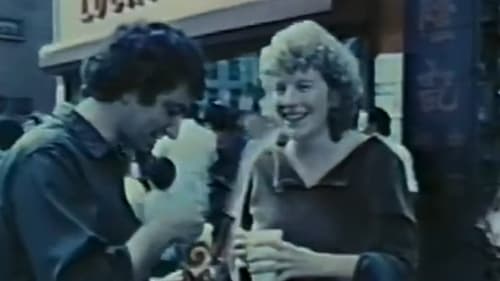
Self
Filmmaker Jonas Mekas films 160 underground film people over four decades.

Lighting Director
A ramshackle underground SF satire set and shot in the self-absorbed art world of lower Manhattan, written, produced, and directed by Joe Gibbons, who also plays one of the lead parts. Gibbons plays a mad scientist who's developed a technique for transferring personalities from one person's body to another; he becomes obsessed with an outlaw artist (played by performance artist Karen Finley) who destroys paintings in various galleries as a form of anarchist, anticapitalist protest.

Dirk Dirkson
A ramshackle underground SF satire set and shot in the self-absorbed art world of lower Manhattan, written, produced, and directed by Joe Gibbons, who also plays one of the lead parts. Gibbons plays a mad scientist who's developed a technique for transferring personalities from one person's body to another; he becomes obsessed with an outlaw artist (played by performance artist Karen Finley) who destroys paintings in various galleries as a form of anarchist, anticapitalist protest.

Camera Operator
A young woman, on the brink of sexual awakening, is shocked by the presence of her mother in bed. The imagined presence of the mother's body haunts all further sexual encounters and desire, directing and controlling the scene of passion. Writes Zando: "The 'Aha-erlebnis' (experience) is the moment when a child first recognizes his own image in a mirror. It is an experience critical to the development of intelligence and identity. It is also a moment when the 'self' is surrendered to the control of an external influence. The Mother acts as the reflecting surface from which the child develops his/her sense of self. Desire for the mother's body, and later for the lover's, mediates the child/female's subjectivity. This is accomplished by controlling love; it is the mother's power to fulfill desire that shapes a child's sense of identity."

Director
If the intersection of desire and authority is phallus, the intersection of absence and vigilance is vagina. The tape’s laconic title (I saw, I conquered—but I didn’t come) encodes its vaginal pretense. In effect, Vidi Vici is a male artist exploring a vaginal posture. By interleafing different gender characterizations with various narrative impulses, it circumvents linearity while emptying our gaze into the interstices between action and incapacity. —Tony Conrad

Camera Operator
Hey Bud begins with the suicide of Bud Dwyer, a government official who killed himself on television. Writes Zando: "I view the suicide as pornographic. The suicide, exposed to a wide television audience, becomes a kind of sex act that plays upon the tension created between exhibitionist and voyeur. It forces viewers to take either an empathetic position vis-a-vis the exhibitionist, or to act as voyeurs (who release their repressed desire to see the forbidden face of Death). My interest is to understand the power seated in the position of the exhibitionist, and to explore that source of power for my own personal drama. Bud Dwyer gained power by authoring his own death, but his power was fatal: the instant power is taken via exhibitionism, it is lost through death. This is the traditional power for women who must seek power via exhibitionism and exploitation — they gain power only through death-of-self."

Director
The visual track of Weak Bodies and Strong Wills comes from my 1973 film, Enlightenment through Experience: Interim Semester at Albright College. The found film images had been kept in a closet at Albright College, where I was invited to teach a workshop. I edited the original silent footage and added audio as a demonstration. In video, it has been turned into a little song about the rust belt. Incidentally, “The Boss” is played by Harry Truman, seen as he visited Reading, Pennsylvania, sometime around the middle of the century. —Tony Conrad

Director
This version of the Dick and Jane and Baby Sally tale was influenced by Dorothy Bloch, who stresses the role of childhood fear that the parent will kill the child. An alternative title, “The Scissors Bird,” is intended as a reference to “The Story of Little Suck-aThumb” in Hoffman’s Struwwelpeter, in which little Conrad has his thumbs cut off. The clearest issue from the stormy advance of family history over the last two decades is that adult perceptions of children are unanchored and self-absorbed. By killing the imaginary child, Run Dick, Run Jane skews the adult viewer’s inner child narrative investment. —Tony Conrad

Director
A trisection of the spectators’ power over their own image language: word, trance, and command are installed as valences of the artist’s license, revealed as figures of parental authority. How peculiar that people like being an audience because they enjoy their submission to the authority of the program. This ritual of being dominated is a conspiracy with themselves that we enjoy but refuse to acknowledge. “Oh, no. I don’t like TV because I’m submissive; it’s because it makes me feel good.” The programs are always carefully crafted to be sensitive to people’s selfprotectiveness, even if they offer a good scare, or a good cry. Well, if this is all true, what happens when, by chance, you submit to a program that refuses to be polite about your closet masochism? That tells all? —Tony Conrad

A trisection of the spectators’ power over their own image language: word, trance, and command are installed as valences of the artist’s license, revealed as figures of parental authority. How peculiar that people like being an audience because they enjoy their submission to the authority of the program. This ritual of being dominated is a conspiracy with themselves that we enjoy but refuse to acknowledge. “Oh, no. I don’t like TV because I’m submissive; it’s because it makes me feel good.” The programs are always carefully crafted to be sensitive to people’s selfprotectiveness, even if they offer a good scare, or a good cry. Well, if this is all true, what happens when, by chance, you submit to a program that refuses to be polite about your closet masochism? That tells all? —Tony Conrad

Director
Using the devices of the war film genre,
Tony Conrad cast his film with friends and colleagues, such as Mike Kelley, David Antin, Sheldon Nodelman,
and Tony Oursler. Rather than directing the actors, he presented them with unscripted scenarios that could only
be enacted within the strictly defined roles of officer or soldier. Each title carried its own set of rules and
restrictions.

Director
“A man, an accordion, a ladder, and a video camera. It’s as simple as that.” - Andrew Lampert

“A man, an accordion, a ladder, and a video camera. It’s as simple as that.” - Andrew Lampert

Director
This exquisite single shot is a complement to Combat Status Go. Here the viewer is positioned casually, even though every other element in the film experiences a painful precision: piano, gun, wardrobe; conversation directed at (and across the bow of) the viewer; timing, direction, gaze. —Tony Conrad

This exquisite single shot is a complement to Combat Status Go. Here the viewer is positioned casually, even though every other element in the film experiences a painful precision: piano, gun, wardrobe; conversation directed at (and across the bow of) the viewer; timing, direction, gaze. —Tony Conrad

Director
"A curiosity, Movie Show looks backward to the era of structural films, particularly Ken Jacobs’s Tom, Tom, the Piper’s Son. The clip of film used in this performance is taken from my Articulation of Boolean Algebra for Film Opticals, the work with which I closed out my interest in combinatorial and logical structures." —Tony Conrad

Director
“Cycles of 3s and 7s is a doubled statement. First and foremost, it is a commentary on computer art and the role of computers in video. Secondly, its arithmetic project has some bearing on the construction of musical scales. In reclaiming the computer as a performance instrument, I intended that the human operator must compete directly with the computer, doing what the computer does best. The selection of a simple hand calculator was a deliberate denial of the computer aesth/ethic of bigger, faster: computer art must be doable within even the most modest architecture. Cycles of 3s and 7s shows that it is not the answer that ‘counts,’ but the pleasure in getting there. Simple rote calculation is turned into rhythm and song; accuracy of gesture and count become a game. These are ‘stories’ about numbers, the kind machines should like to hear and tell—if they ‘liked.’” - Tony Conrad

Director
Made out of six patterns of alternating black and white imposed upon the full surface of the film strip.

Director
Negative image is shot from a small rear-projection screen, the film comes out of the camera continuously (in the dark room) and is immediately processed, dried, and projected on the screen.

Director

Director
A machine-gun film roll of 4-X negative film was exposed using pressure (hammering) and was flashed in its exploded physical configuration.
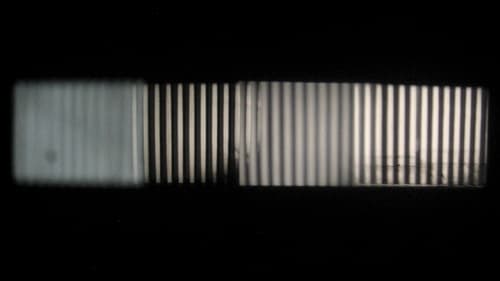
Director
Stroboscopic vertical lines on a loop accompanying minimalist drone music compositions.

Director
Four Square is a film designed for four screens surrounding the audience. Through its spatial distribution of abstract image and sound it begins to build up a TIME/SPACE experience where the mental construction of the events do not clearly differentiate between separation/ distribution in time from separation/ distribution in space. A unified field TIME/SPACE experience.

Director of Photography
“Coming Attractions” looks backward into the memories and forward into the future of Francis Francine, an elegantly dowdy transvestite of, and indeed beyond, a certain age. The memories, haunted by a Spirit of Seductions Past (played by a quite glorious naked young lady who fortunately bears absolutely no resemblance to Francis Fran cine) suggest a generally lurid life of sumptuous sex and questionable liaisons. The future, presented by an ancient fortune teller with a wonderful crystal ball that holds a lively go‐go dancer and that seems to mediate between interchanging black and white halves of the screen, follows Francis Francine through the reactivation of an ancient affair, to her death (a jealous ex‐lover) and her triumphant entrance into a pastoral paradise that looks like a cross between several scenes from “81/2” and “The Embarkation for Cythera” in drag.

Director
Straight and Narrow is a study of subjective colour and visual rhythm, although it is printed on black and white film, the hypnotic pacing of the images will cause most viewers to experience a programmed gamut of hallucinatory colour effects. Through the intermediary of rhythm, the maximal impact is drawn from the simplest of universal human images: straight horizontal and vertical lines. Set to a strong percussive musical background, rapidly alternating images of black and white straight lines are juxtaposed in precise rhythmic patterns to create specific colours... if you can watch without becoming hypnotised...
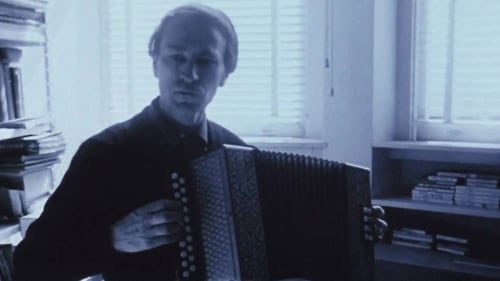
Self
An epic portrait of the New York avant-garde art scene of the 60s.

At the court of the Yellow Emperor, the Majoon Traveler & Lady Firefly appear in the Hall of Unconscious Magnetism.

Music
The story of Joan of Arc as applied to the present revolution in arts and more. The Gothic is applied to the War in Vietnam. The film is experimental in the sense that in it the visual becomes tactile.

The story of Joan of Arc as applied to the present revolution in arts and more. The Gothic is applied to the War in Vietnam. The film is experimental in the sense that in it the visual becomes tactile.

Sound
The story of Joan of Arc as applied to the present revolution in arts and more. The Gothic is applied to the War in Vietnam. The film is experimental in the sense that in it the visual becomes tactile.

Director
A Dracula parody where the camera moves to the eye of Count Flickerstein and the image changes to static-like patterns.
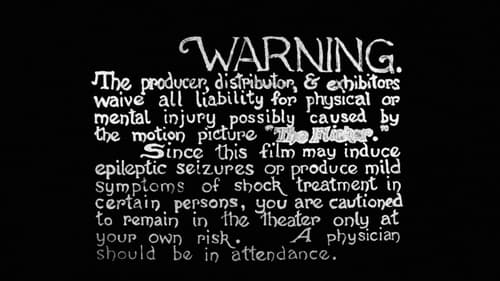
Director
A film consisting of alternating black and white frames.
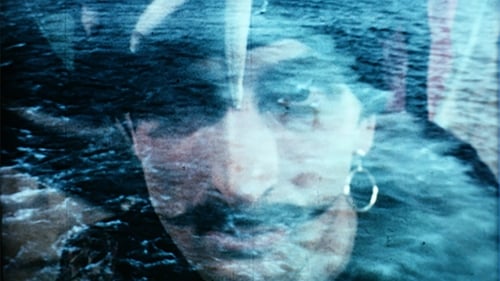
Music
Ron Rice's Chumlum is one of those films in which the conditions of its construction are integral to the experience of watching it. It is a record of a cadre of creative people having fun on camera, playing dress-up, dancing, flirting, lazing around.

Music Director
Ron Rice's Chumlum is one of those films in which the conditions of its construction are integral to the experience of watching it. It is a record of a cadre of creative people having fun on camera, playing dress-up, dancing, flirting, lazing around.

Sound
Filmmaker and artist Jack Smith described his own film as a “comedy set in a haunted movie studio.” Flaming Creatures begins humorously enough with several men and women, mostly of indeterminate gender, vamping it up in front of the camera and participating in a mock advertisement for an indelible, heart-shaped brand of lipstick. However, things take a dark, nightmarish turn when a transvestite chases, catches and begins molesting a woman. Soon, all of the titular “creatures” participate in a (mostly clothed) orgy that causes a massive earthquake. After the creatures are killed in the resulting chaos, a vampire dressed like an old Hollywood starlet rises from her coffin to resurrect the dead. All ends happily enough when the now undead creatures dance with each other, even though another orgy and earthquake loom over the end title card.
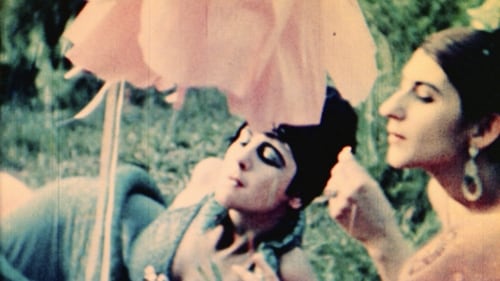
Mummy
The feature length Normal Love is Jack Smith’s follow up to his now legendary film Flaming Creatures. This vivid, full-color homage to B-movies is a dizzying display of camp that clearly affirms Smith’s role as the driving force behind underground cinema and performance art of the post-war era. The cast includes Mario Montez, Diane de Prima, Tiny Tim, Francis Francine, Beverley Grant and John Vaccaro. Smith was known to constantly re-edit the film, often during screenings as it was still unspooling from the projector. This print has been restored under the supervision of Jerry Tartaglia and is provided by Filmmakers Co-operative in New York City.

Music
A deliberately non-synchronous film, shot in 8mm with the sound on tape. Piero Heliczer reads his poem "The Autumn Feast," and the visuals interact with, but does not literally represent, what is read.
